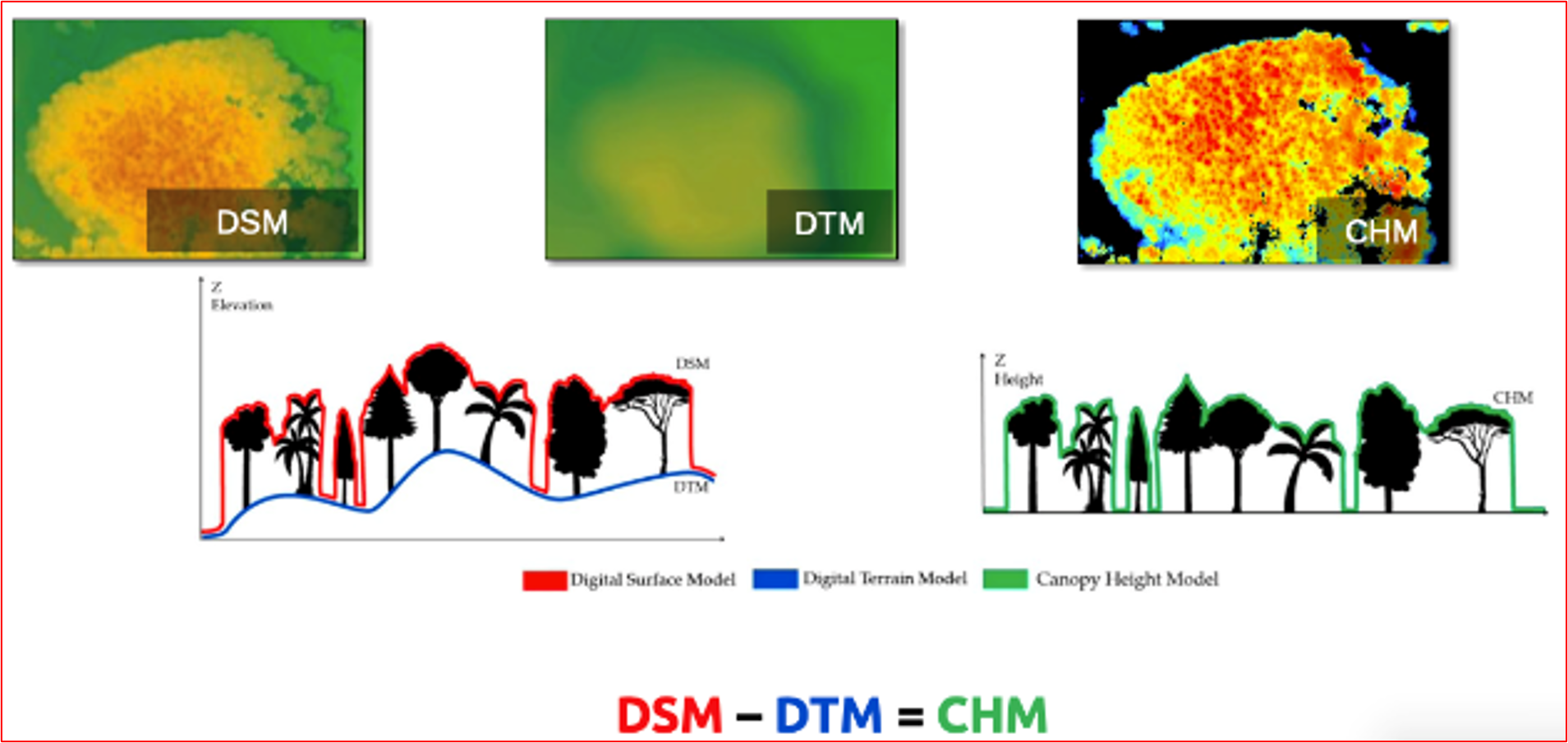Drones play a pivotal role in the 3LD-Monitoring system, complementing other data collection methods.Drones are essential tools in partner countries to fortify technical skills among local staff. These skills encompass flight planning, navigation and image evaluation. The drone monitoring aims to empower project staff to capture data tailored for photogrammetric analyses, from which crucial geoinformation emerges.
The drone mapping methodology encompasses five stages, with the first two focusing on drone operations:
- Mapping mission preparation (desktop work)
- Mapping mission execution (fieldwork)
- Development of Digital Surface Model (DSM) & Orthomosaic generation (desktop work)
- Data analysis and refinement (desktop work)
- Integration into the prevailing data system (desktop work)
Drone data aids in evaluating indicators linked to carbon/biomass, such as mortality rates and forest types. Notably, with the application of allometric equations and proper characterization of the land type, above-ground biomass estimations of trees can be determined.
Drones with pre-set flight planning capability ensure seamless orthophoto creation from individual images. This enables individual snapshots to seamlessly merge into an orthophoto (aerial photograph corrected for distortions, allowing accurate measurements). It's also vital to consider the availability of these drones in the local markets of partner countries. Leveraging local knowledge by involving local academia is paramount in this process. They can provide essential allometric equations, grounded in tree height, that facilitate precise biomass calculations.
Drones generate high resolution images, allowing a detailed overview of land cover changes, tree survival and erosion rates, among others. Combined with field data, drone-based monitoring is strengthened, guaranteeing a sound monitoring.
The heterogeneity of trees and vegetation density often hinders a sound extraction of common key points between the images, which is necessary to estimate the heights and other indicators. In this regard, increasing the overlap between images to a minimum of 85 % frontal and side overlap can improve the extraction of key points. Also, increasing the flight height of the drone reduces perspective distortion, which facilitates the detection of visual similarities between overlapping images. However, too much overlapping, i.e., high overlapping percentages result in higher amount of data, making data processing more time intensive.
Another aspect already mentioned is the availability of suitable drones in the partner countries. Importing drones to the respective countries is difficult, and bureaucratic barriers persist.
